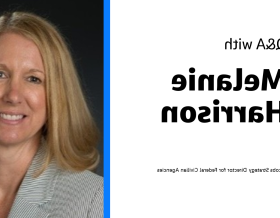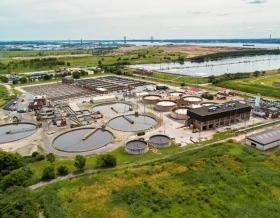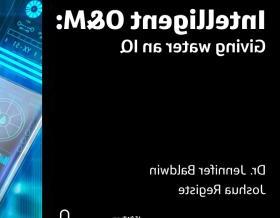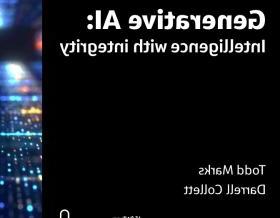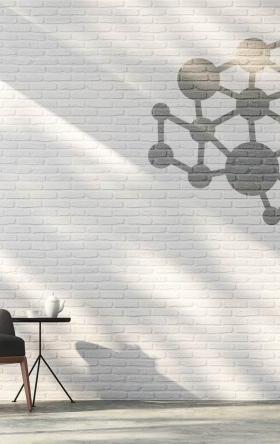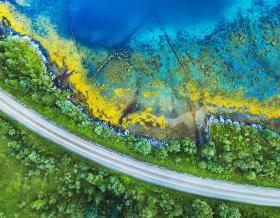
It’s one of the most valuable pieces of New York City real estate, with dramatic views across the East River. And now New York City (NYC) is studying whether Rikers Island — currently a jail complex — can be transformed into a wastewater resource recovery and renewable energy hub.
As part of the Renewable Rikers Act (2021), 纽约市环境保护部(DEP)与Jacobs签订了合同,研究将四个老化的污水处理设施合并为一个设施的可行性, new wastewater resource recovery facility (WRRF) on Rikers island. Jacobs, along with many talented, local subconsultants, 正在协助环境保护部启动一项长期计划,该计划可以重新构想纽约市的废水首页和社区景观.
What's the vision?

关闭监狱并将赖克斯岛变成一个最先进的WRRF和能源中心,可以消除对周围行政区现有废水处理设施的需求,并为在整个城市实现一些重要的社会正义和气候目标提供重要机会.
新设施可以使DEP更容易地采用创新技术,以最大限度地提高能源效率和有益地利用处理后的废物, like biogas and make strides toward fiscal and environmental sustainability. It’s also a means to tackle climate change, with a focus on reaching citywide goals for greenhouse gas reduction, carbon neutrality and energy efficiency, while also meeting the challenges of a steadily increasing population.
The Rikers Island redevelopment offers an opportunity for renewal, 在纽约市的几个社区进行转型,为公平和包容性的经济发展创造机会. Locating the new facility on Rikers Island will allow the existing four facilities to close, opening that waterfront property for possible community use. This project is far more than a wastewater plant — it’s an urban redevelopment and revitalization opportunity first, with a chance to achieve some significant social justice goals. These goals drove our strategy.
Sustainable development and OneWater core to project success
Jacobs’ OneWater 首页规划方法反映了一个更广泛的趋势,城市污水管理考虑了三个相互关联的方面, people-focused realms — the engineering and urban planning realm (conveyance/treatment affecting people and the environment, going beyond traditional planning to consider enhancements to the urban landscape and surrounding communities, using digital tools such as automation, SCADA and Digital Twins); the economic realm (understanding the need to consider the circular economy); and the social equity and justice realm (working towards full and equal participation of all groups in a society, where resources distribution is equitable and all people are psychologically and physically safe and secure).
“Our approach for this study encompasses OneWater tenets, as well as a broader set of goals established by NYC’s OneNYC 2050 and the United Nations’ Sustainable Development Goals (可持续发展目标)——到2030年克服人类最大挑战的17项承诺——作为识别问题的视角, plan and innovate in powerful new ways,” says Jacobs Global Water Director Susan Moisio. “Using this method, we are not only retooling infrastructure, but in doing so we are transforming lives and contributing towards a greater goal.”
As the largest combined water and wastewater utility in the U.S., New York is leading the way by studying the long-term redevelopment of Rikers Island and other NYC facilities.

Exploring urban revitalization
For many years, Jacobs has been exploring the evolving role of infrastructure, particularly in our cities and urban centers. 从提供满足人类基本生存需求的最低限度的城市首页(如自来水和住所)到提高经济增长和生产力, and ultimately targeting more advanced human needs to improve all aspects of quality of life and sustainability, our cities are being transformed.
In a 2021 Jacobs “In the kNOW” webinar, we explored the role of water infrastructure projects as catalysts for urban revitalization.
“This Rikers study is a transformational opportunity to drive social equity, 重新定义城市景观,为纽约居民创造遗产,同时为未来的水利首页项目如何成为城市振兴的催化剂提供蓝图,” adds Susan Moisio. “We can’t wait to begin.”
The challenge of funding
In the United States, 《首页投资和就业法案》(IIJA)提供了一个巨大的机会,通过提供超过500亿美元的资金来支持变革性的首页,以改善美国的经济状况.S. drinking water, wastewater and stormwater infrastructure — the single largest investment the water sector has seen in decades. In addition to nearly doubling the Drinking Water State Revolving Fund, the bill makes targeted investments to combat some of the toughest issues facing the industry, including water quality in disadvantaged communities, lead service-lines and emerging contaminants.
A recent Jacobs “In the kNOW” webinar outlines the primary programs to distribute the Federal stimulus dollars to water sector projects; how to access those funds; and the key attributes of projects that are successful in securing Federal funding support.
You might be interested in...
-
 Page
PageOneWater
解决世界上最复杂的水管理挑战需要我们认识到水是如何将我们联系起来并影响我们所有人的. It requires different thinking — a OneWater approach — and that’s where we come in.
-
 Webinars
WebinarsLeveraging Water Infrastructure Projects as a Catalyst for Urban Revitalization
Cities are archetypal ‘systems of systems’ – everything connects to and impacts everything else. Elements of cities – infrastructure, services, open spaces, community activities, and more – cannot and should not be addressed in isolation. Historically, this mono-dimensional approach has been commonplace. Recognizing, devising, instituting, and operationalizing a comprehensive, integrated systems-based approach to strategy, planning, design, and development of water infrastructure is essential to the future of cities; and cities are fundamental to the global attempts to properly manage the water cycle and address climate change and social inequities. In this “In the kNOW” webinar, we will explore the role of water infrastructure projects as catalysts for urban revitalization, presenting a case for this transformative approach and sharing actual examples to highlight its successes to date, while defining remaining challenges.
-
 Solution
SolutionReplica
Replica is Jacobs' digital twin solution software platform, delivering intelligent solutions for our customers around the world for more than 20 years.
-
 Webinars
WebinarsShow Me the Money: Accessing Funding through Federal Programs
In this “In the kNOW” webinar, we will describe the primary programs that will be used to distribute the Federal stimulus dollars to water sector projects; how to access those funds; and the key attributes of projects that are successful in securing Federal funding support. We will also share the benefits you can achieve by taking advantage of these new programs, along with information about important previously existing Federal funding sources, 例如通过《水首页融资与创新法案》(WIFIA)项目提供的灵活融资的低息贷款, now in its fifth year. 您将听到雅各布斯员工的见解和成功案例,他们帮助客户获得联邦和州政府数十亿美元的水利首页资本项目融资, and from one of the senior underwriters in EPA’s WIFIA loan program.



















